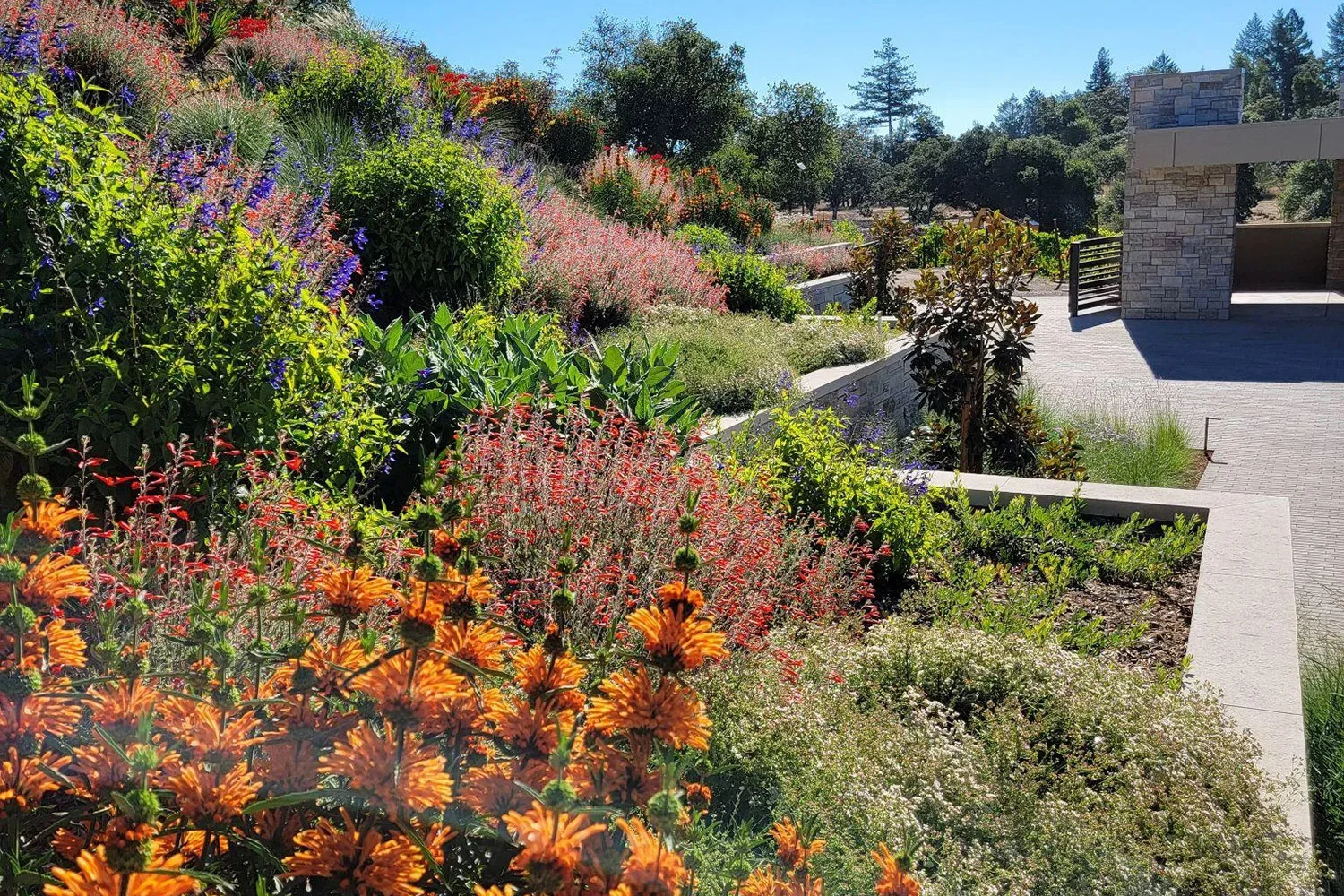
Most Important Questions for New Landscape Care
After designing and installing a new landscape, it’s critical to ensure your investment and hard work are paid off so that you can enjoy the fruits of your labor: witnessing your landscape grow and come to life. Local Sonoma County landscaping companies are often asked the same questions by new landscape owners. To stay on top of your landscape, we’ve assembled a list of key items to remember to prevent your dream garden from becoming a nightmare scenario!
How Do I Control Weeds in a New Landscape?
Hand weeding is the most effective method for controlling weeds in a new landscape. Be sure to pull the weeds out as soon as you see them, this will make it easiest to remove the entire root and prevent the weed from resprouting. Additionally, long-term effective weed control is achieved through the removal of weeds before they go to seed. Many weeds put out multiple seasons worth of seeds in a single drop resulting in years of maintenance requirements down the road to regain control. Pull them early and get the whole root out!
Should I Use Weed Sprays in My New Landscape?
We avoid using sprays unless there is a seriously pernicious weed infestation that can’t be controlled by hand, such as Bermuda grass. This is because sprays like Round-Up are linked to a variety of serious health risks and even “non-toxic” or organic sprays have negative effects on insects, pollinators, ecosystems, and potential soil health.
How to Use Weed Spray
However, many homeowners and landscape technicians will employ herbicide as a quick method of control. We recommend that if you do spray, mix at the lowest effective dilution rates, set the sprayer to release droplets rather than mist which leads to toxic drift, and spray in the early morning or late evening hours when wind speeds are low, and pollinators are less active.
How Do I Water a New Landscape?
New plants need their roots to be kept moist at all times, so watering twice a day is recommended when establishing new plants. Ideally once early in the morning, and once at the hottest time of the day. If you have an irrigation controller set it to run 7 days per week, with a start time around 6 am, and a second start time around 2 pm. For a 1-gallon plant on a drip system, about a half-gallon of water per cycle will suffice. This is called an ‘establishment water schedule’.
Adjusting Your Landscape’s Watering Schedule
After about 2 weeks, depending on the weather conditions, you can reduce this watering down to about 5 days per week, after about a month that can be reduced to 2-3 days per week. Once you’ve established your plants, adjust your start times to run outside of daytime hours, such as both start times before sunrise, or both after.
This is because irrigating when it’s hot out leads to some of the water evaporating and being wasted. We only water during the peak heat during establishment to ensure the tender new roots remain hydrated while they reach deeper into the surrounding soil.
How Do I Fertilize a New Landscape?
New plants should be given some fertilizer to help them become established. This can be done with compost tilled into the planting area, granulated fertilizer applied to the surface, or fertilizer packs put into the planting hole.
Compost is King
All three options work well, however we always choose compost over the other options because it does far more to improve soil health and structure, as well as provide long-term benefits to the plants. While granulated fertilizer and fertilizer packets help, they are short-lived and do nothing to improve soil health and structure which are two of the most important factors related to plant resilience to pests, infections, and drought.
Expert Landscapers Near You – Inspired Landscapes
Looking for landscapers who can boost your new landscape with professional maintenance? Contact Inspired Landscapes today! Give us a call for a free consultation at (707) 395-7474.

Owner, Inspired Landscapes LLC
Matthew Ripley is the owner of Inspired Landscapes LLC, a Healdsburg based landscape design, installation, maintenance, and irrigation firm serving Sonoma County. His work blends horticultural expertise with sustainable practices, drawing creative influence from Sierra backpacking and Sonoma winery estates to craft gardens that invite wildlife and year round color. Client testimonials highlight his design leadership on residential, estate, and winery properties across the region.





